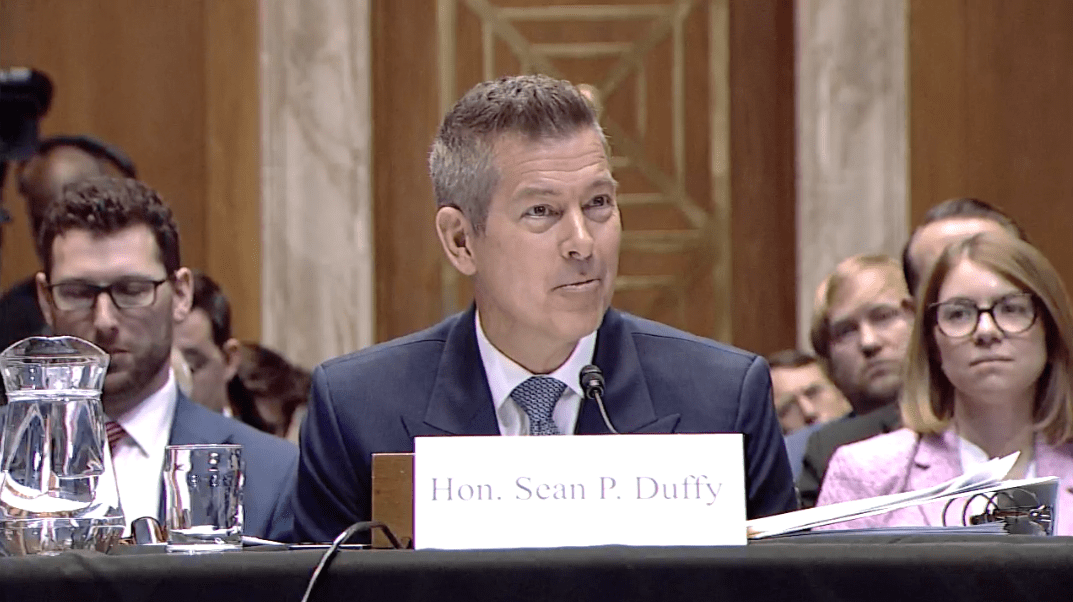We're pleased to welcome Stephen Smith as a new contributor to Streetsblog Capitol Hill. We'll be running Stephen's work on a regular basis, and you can catch more of his writing at his home blog, Market Urbanism.
Amtrak's annual ridership may inch over 30 million for the first time this year, but the assault on its funding by House Republicans hasn't abated. Rep. John Mica (R-FL), chair of the House Transportation Committee, recently proposed slashing Amtrak's federal subsidies by 25 percent over the next two years. While it's tough to say how much deficit hawks will actually succeed in cutting, it's looking increasingly unlikely that Amtrak – and indeed public transportation in general – will get the cash that advocates would like. Given the political climate, Amtrak faces, realistically, two choices: do more with less, or cut service and raise fares.

Unfortunately, Transportation Secretary Ray LaHood's recent announcement of a $562.9 million loan to Amtrak to buy new locomotives for the Northeast Corridor suggests that they will not be doing more with less. The money will go to buy 70 electric locomotives, which, as Alon Levy at Pedestrian Observations explains, are far more expensive than comparable European and Japanese models, and will lock us into outdated technology for decades to come.
Europe and Asia have realized the benefits of lighter and more nimble trains – cost, speed, and energy consumption among them – but Amtrak's planned purchase is further proof that the U.S. is not quite there yet. One easy cost-saving move would be to wait two years for Positive Train Control, an anti-crash safety technology, to be fully installed along the Northeast Corridor. By 2015, Amtrak will no longer have to comply with the Federal Railroad Administration's requirement that trains be able to withstand crashes with enormous freight trains. Free to buy lighter off-the-shelf foreign designs, Amtrak could then save 35-50 percent off the cost of the locomotives, as Alon notes.
An even more radical modernizing and cost-cutting measure (at least in the long run) would be to transition the Northeast Corridor Regional fleet from locomotive-hauled trains to electrical multiple units, or EMUs, in line with best practices in Europe and Asia. EMUs are, like subways in the US, individually-powered carriages, and standard models can be as cheap as the inflated price that Amtrak pays for its unpowered passenger railcars. The locomotive purchase locks Amtrak into buying more of these unpowered carriages in the future, making Amtrak's decision to go with locomotives all the more important.
Taxpayers and transit-riders may be getting hosed by Amtrak's lackadaisical attitude towards spending, but the vendors building the trains and supplying its parts probably don't mind. Siemens may walk away with the lion's share of the cost differential, spending much of it redesigning the locomotives to FRA standards. Thanks to Buy America domestic sourcing rules, American workers and suppliers will get the rest, with Siemens hiring 250 workers for the contract and knock-on effects for other American suppliers. Amtrak's aversion to change and Congress's ambivalence about public transportation started the problem, and these vested interests now have a stake in perpetuating it.
Unfortunately for transit advocates, neither the Democrats nor the Republicans are making a serious effort to cajole Amtrak – or any federally-funded programs, really – into spending money more wisely. Mica has put forward two transportation bills recently – a six-year general reauthorization, and a bill focused exclusively on privatizing Amtrak's Northeast Corridor. Neither, however, would address crash safety standards or Buy America protectionist policy. His "major streamlining of the federal review process" might make transit projects move along a bit more quickly, but it won't do anything to bring down high costs.
And while Mica hasn't made any real effort to spend transit money more effectively, the Obama administration has gone a step further and actually increased costs by strengthening the protectionist stipulations attached to federal transit dollars. Back in February, Federal Transit Administration chief Peter Rogoff issued a memorandum stating that they will no longer consider "public interest" waivers for the Buy America program, which are normally issued when compliance with the rules for sourcing and manufacture would be a burden on transit agencies. This was perhaps inevitable with stimulus dollars, but the administration made clear in the memo that it affects all federal spending, not just stimulus funds.
With high unemployment numbers and an election coming up, the issue of jobs clearly looms large for Obama and the Democrats. Transit is for them as much a jobs program as it is an enhancer of mobility and cities. The risk here, as Tanya discussed a few weeks ago, is that projects will be chosen based on their ability to produce jobs, rather than their effectiveness as transportation.
Transit in the U.S. may be underfunded, but there's no doubt that it's also burdened by a considerable amount of waste. Beyond pricey rolling stock, American rail construction costs are astronomical, and labor productivity is rather low. With lean times ahead for the feds and many states, it's time to get serious about transit spending. This should appeal to liberals because it means more transit, and to conservatives and libertarians because it means less waste and government spending.
But Democrats are still more interesting in ribbon-cuttings than details, and Republicans are still culturally allergic to understanding passenger rail. That means it's up to urbanists to explain to both sides why getting passenger rail costs under control should be a shared goal.





